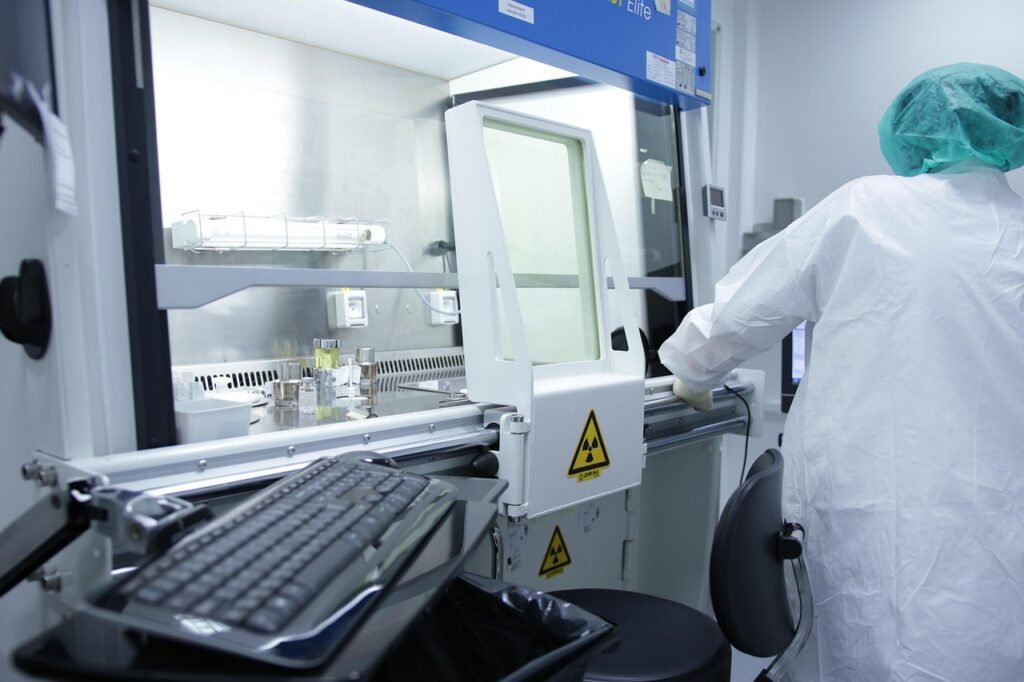
Humans are the main cause of cleanroom contamination. 40% of the contamination in cleanrooms is directly caused by humans. Therefore, cleanroom workers need to wear special clean room clothes.
1. What is cleanroom clothing?
Cleanroom clothing refers to clothing worn in a controlled environment. It is a type of personal protective equipment . Cleanroom clothing is designed to prevent particles on the human body from contaminating the cleanroom. This type of clothing is essential for personnel safety, especially when dealing with chemical hazards. These clothing usually does not shed, is mostly non-woven materials, and can be safely worn in a controlled environment.
2. Cleanroom clothing requirements
Different types and grades of cleanrooms require different clothing standards.
Implement cleanroom wearing procedures to ensure that contamination is controlled and in compliance with standards such as IS0, EU-GMP, etc.
According to IS0 classification, IS07 and IS08 cleanrooms allow only work clothes. Personnel entering IS05 and 6 cleanrooms must wear cleanroom work clothes with hoods, gloves and boots.
3. Material of cleanroom clothing
Choosing the material of cleanroom clothing is the first step. Natural materials such as cotton are not suitable for use in cleanrooms because they easily generate dust and particles. It is best to use synthetic or man-made materials.
There are three main types of synthetic materials: woven materials, non-woven fabrics, and materials mixed with woven and non-woven fabrics.
Performance characteristics: Woven fabrics generally have good strength and wear resistance, good air permeability and moisture absorption; non-woven fabrics have good waterproofness, impermeability and filtration performance.
· Synthetic material woven fabric: Polyester is a commonly used woven material for cleanroom clothing. It is low-cost and durable. This material is widely used in controlled environments, but it may not be an ideal choice for cleanroom applications.
· Non-woven fabric: A commonly used material is spunbond polyolefin, also known as Tyvek. It is low-cost, synthetic and very strong. It can effectively block particles and moisture.
· Combination of woven and nonwoven materials: This combination is found in expanded PTFE laminates such as G0RE-TEX. This material is durable, comfortable to wear, reusable, and has a long service life, and can be used in the most demanding cleanrooms.
4. Disposable/Washable Cleanroom Clothing
The choice of disposable and washable cleanroom clothing depends on considerations such as clothing type, convenience, cleanroom classification, and application. Many cleanrooms use washable and reusable clothing. For example, cleanroom hoods can be washed and reused, but shoe covers are discarded after each use.
Washable Cleanroom Clothing
Washable or reusable clothing is washed in a special way to remove dirt and disinfect without damaging the material.
Disposable Cleanroom Clothing
Premium cleanrooms choose disposable work clothes because it is the safest and most economical option. Disposable work clothes should be of high quality and comfortable to wear.
5. How to choose cleanroom clothing?
To sum up, when choosing cleanroom clothing, you need to consider the following factors:
·Cleanroom level
Different levels of cleanrooms have different material requirements (woven or non-woven, flame retardant, anti-biological hazards, anti-static)
·Hazard risk protection: Risk protection level of the industry
·Quantity: Whether it needs to be customized, customized products usually have a minimum order quantity.
·Quality: Is it in accordance with the relevant standards of the cleanroom or the relevant test report
·Size: Whether it can be selected according to the size or universal
·Disposable or washable
We are a one-stop service provider of clean room consumables suit for ISO 8 to ISO 5 , including HEPA and ULPA air filters, clean clothes, electronic cleaning wipes, sterile wipes, Polyurethane (PU) sealants, Precision Appliance Cleaners, Oil stain remover
etc. Please contact us
